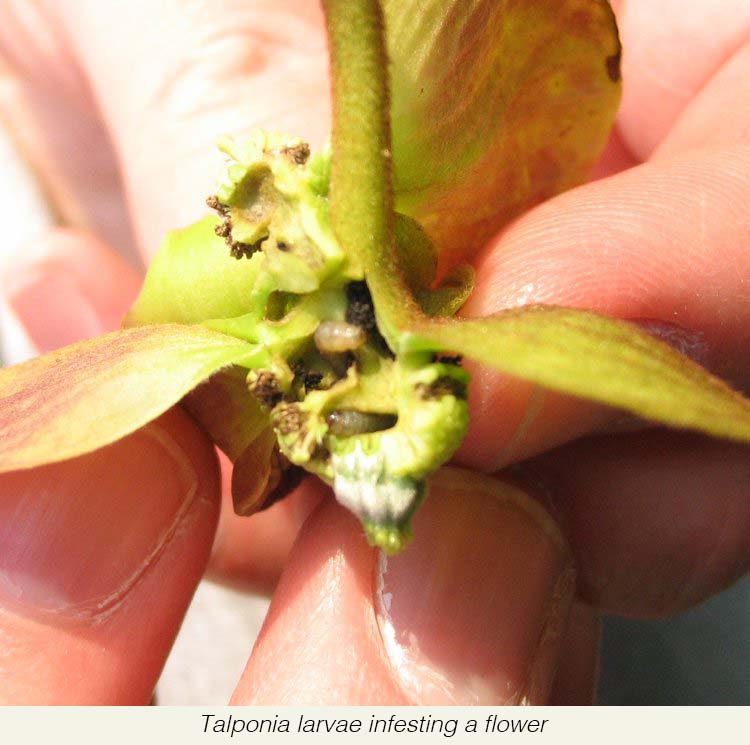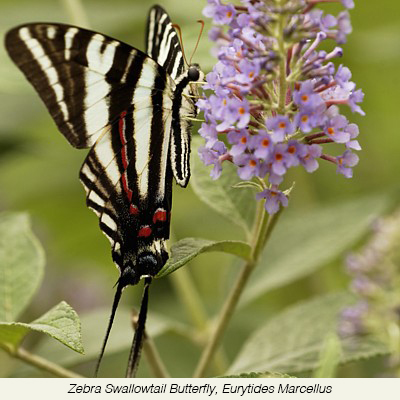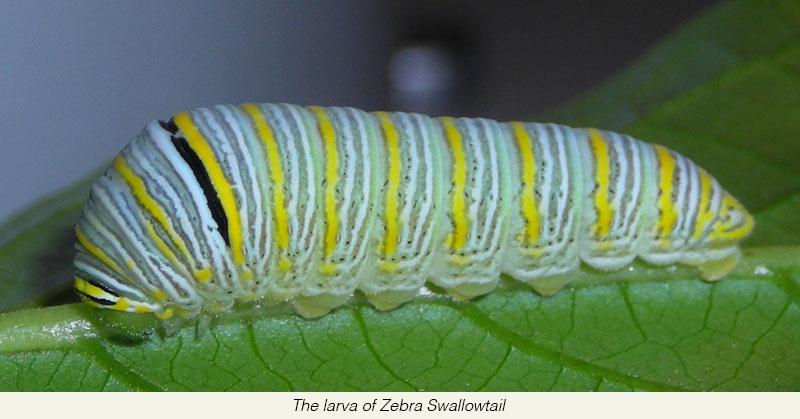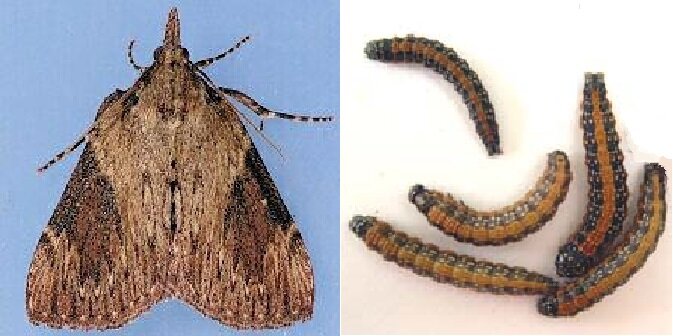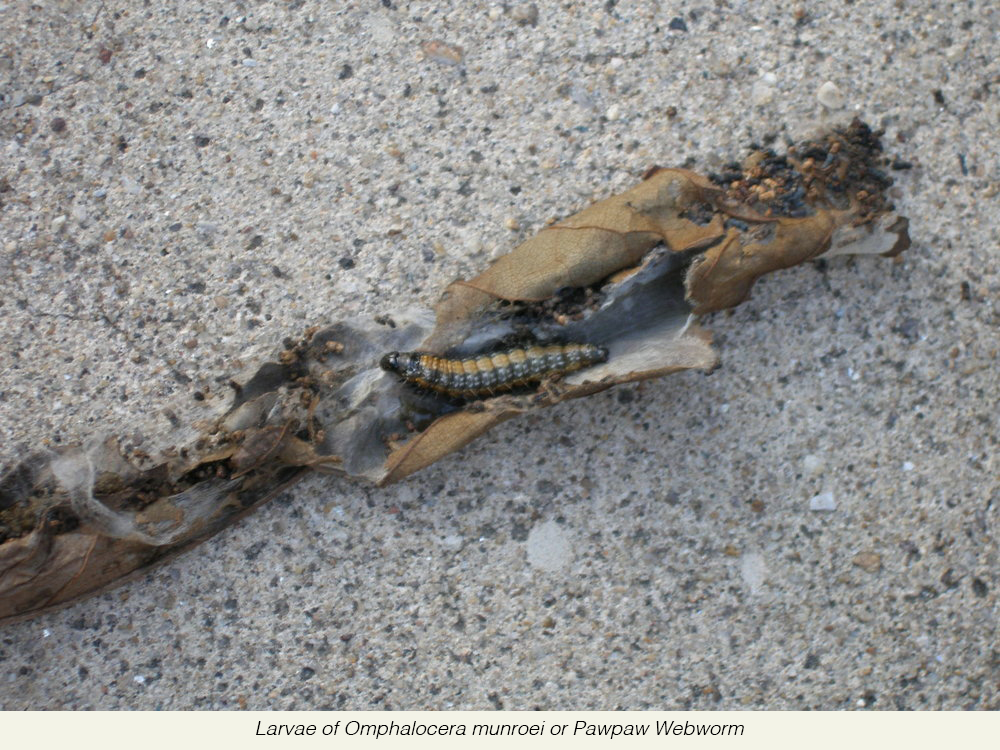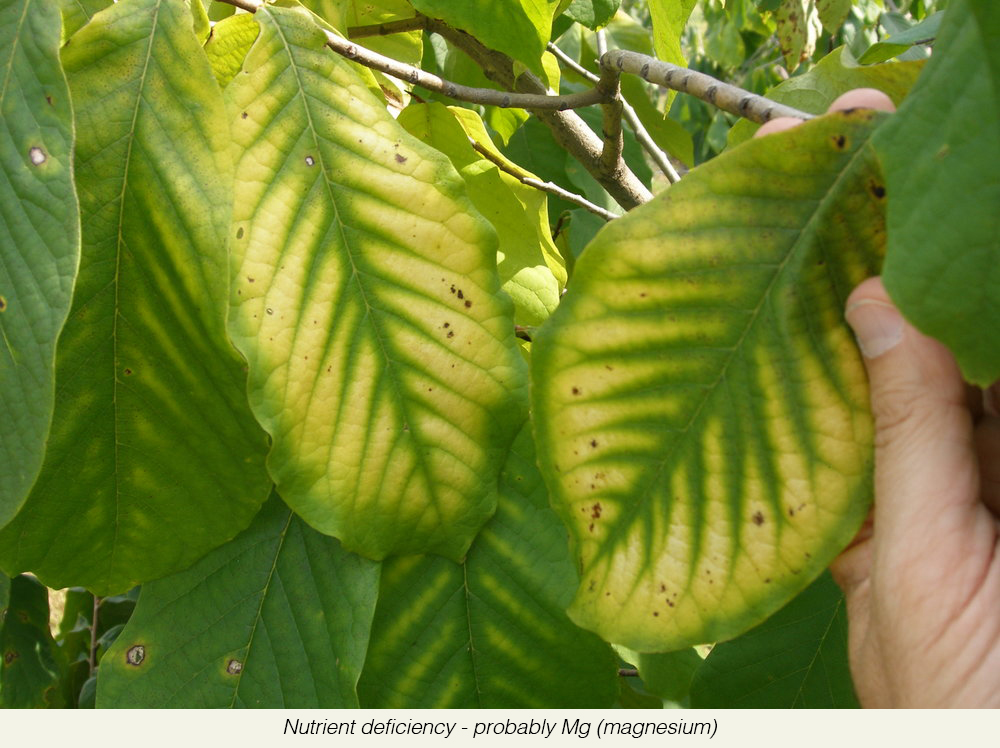Diseases, Pests & Butterflies
Pests
The pawpaw is remarkably unbothered by diseases and pests, but like all organisms it has natural predators and diseases.
The primary insect pests are:
Talponia plummeriana, the Pawpaw Peduncle Borer, is a small native moth about 5 mm long, whose larvae consume the fleshy parts of the flower and tunnel down the peduncle into the branch. This of course kills the flower. In a normal year Talponia provides a beneficial thinning action. But in a bad year Talponia can kill the entire crop.
Protographium marcellus, the Zebra Swallowtail Butterfly, is a butterfly of great beauty, whose larvae are obligate feeders on the tender young foliage of Asimina species. This insect almost never causes economic damage. The eggs are laid singly, the larvae are cannibalistic and are heavily parasitized. It is capable of defoliating small seedlings.
Omphalocera munroei, the Pawpaw Webworm, is a destructive pest of pawpaw. Its larvae feed on the upper ends of branches, killing the leaves, pulling the leaves together as a shelter. It is unsightly, yet because it occurs in late August/ early September, when pawpaw growth has ceased, the damage to the tree is limited. Slugs are reported to be a major defoliating problem in California. Slugs have not been a problem in the eastern US, however.
Fungus
Various leaf spots commonly infect pawpaw leaves and fruits: a complex of Mycocentrospora asiminae, Rhopaloconidium asiminae, and Phyllosticta asminae. Symptoms include tan spots with dark brown borders on leaves, and dark brown to black superficial spots on the fruit. When these black spots on the developing fruit are extensive, it can lead to fruit cracking, which means the fruit is unusable. The blackened skin is no longer flexible and extensible; as the fruit expands the skin cracks exposing the flesh to bacteria and insects. It is worth recalling that fruit cracking is a problem in most fruit species. Other fungi less commonly observed are members in the sooty blotch and flyspeck (SBFS) complex. Soil nutrient imbalances (which can result from improper soil pH) can lead to black fungus rot of the ripening fruit.
Nutrient Deficiencies
A third class of diseases are nutrient related. These are manifest as twisted foliage, chlorosis, and unusual discolorations. In most cases a soil nutrient is missing, and once the cause is identified and the element supplied to the soil, then the plant recovers.
Asimine deficiencies are like Annona deficiencies. Go to this link for description and photos.
Leaves are small, distortd, and yellow. Virus?
Diseases, Pests and Butterflies Gallery
